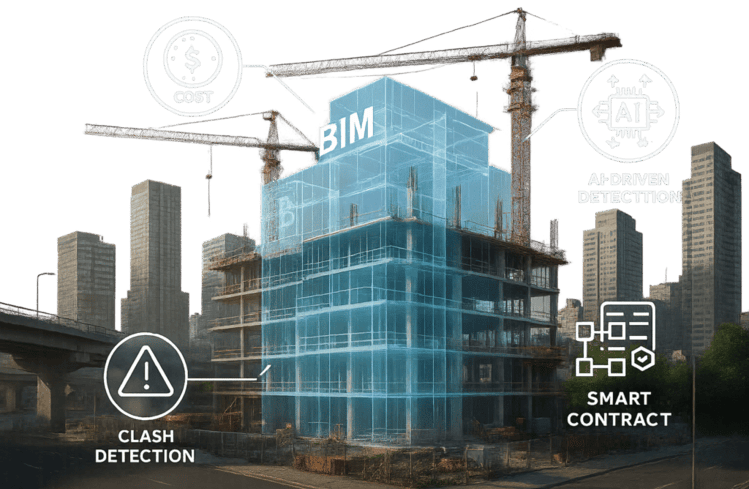Building Information Modeling (BIM) has become central to transforming construction. Top innovators are leveraging digital models, AI, and blockchain to enhance collaboration, boost efficiency, and future-proof infrastructure.
BIM and AI: Smart Design, Smarter Delivery
Pinnacle Infotech leads the way by integrating AI with BIM, automating design workflows and enabling predictive modeling. Their end-to-end digital services help reduce errors and improve sustainability. pinnacleinfotech.com
Infrastructure Reimagined: Bentley & Nemetschek
Unlike building-centric software, Bentley Systems focuses on infrastructure—bridges, railways, utilities—using digital twin and geospatial integration for real-time analysis. ReviztoConstruction Digital
Meanwhile, the Nemetschek Group (through brands like Vectorworks and Allplan) offers powerful BIM alternatives that drive innovation in architectural and engineering workflows. Construction Digital
Next-Gen Collaboration: Revizto & 3D Repo
Revizto, a Lausanne-based firm, offers a cloud-based BIM collaboration platform for unified 2D/3D workflows—ideal for both public and private projects. Wikipedia
In the UK, 3D Repo provides a browser-based SaaS platform, popular for high-profile projects like Crossrail and London’s Olympic Stadium. Their VR and version-control innovations have earned multiple awards. Wikipedia
Germany & Switzerland’s Software Powerhouses
Germany’s RIB Software SE delivers BIM solutions across estimating, costing, and project collaboration, supporting clients globally after its acquisition by Schneider Electric. Wikipedia
cadwork informatik AG in Switzerland bridges CAD/CAM and BIM—especially in timber construction—raising Europe’s leadership in this niche. Wikipedia
AI, 5D, Blockchain: The Future of BIM
Industry insights show a shift from 4D to 5D BIM, integrating dimensions like time and cost into building models, enabling real-time budget tracking and schedule management. DevX
Moreover, integrating blockchain with BIM can bolster transparency, traceability, and smart contracts—automating payments and securing historical data. NatureMDPI
Trendsetter Spotlight: Innovation from Constraints
Take SJ Group’s work in Hong Kong: a prefabricated roof erection designed under strict height limits near an airport—showing how constraints spark digital foresight and precise execution. Business Insider
The construction industry is undergoing its most significant digital transformation in decades, and Building Information Modeling (BIM) is at the forefront of this change. Leading BIM firms are not just creating 3D models—they are crafting intelligent, data-rich environments that power decision-making, reduce risks, and deliver sustainable results.
BIM and AI: Smart Design, Smarter Delivery
Industry leaders like Pinnacle Infotech are pushing the boundaries by merging artificial intelligence with BIM. This allows for automated clash detection, AI-driven design suggestions, and predictive analytics that help construction teams anticipate potential issues before they arise. By embedding AI into BIM workflows, teams can cut project delays, lower costs, and improve energy efficiency—outcomes that are now essential in a competitive global market.
Infrastructure Reimagined: Bentley & Nemetschek
While many BIM providers focus on buildings, Bentley Systems is a trailblazer in infrastructure BIM. Its digital twin technology enables engineers to monitor bridges, railways, and water systems in real-time, ensuring long-term safety and efficiency. Similarly, the Nemetschek Group offers specialized BIM tools for architects, civil engineers, and urban planners. These tools allow seamless collaboration between multiple disciplines, making complex projects easier to manage.
Next-Gen Collaboration Platforms
Collaboration is a critical success factor in construction, and companies like Revizto and 3D Repo are setting new standards. Revizto’s cloud-based platform integrates 2D and 3D workflows, enabling teams to share real-time updates no matter where they are. 3D Repo, on the other hand, allows stakeholders to view, comment, and track revisions through a simple web browser—eliminating the need for heavy software installations. Their work on projects like Crossrail proves that this approach works even in the most demanding construction environments.
German & Swiss BIM Excellence
In Europe, RIB Software SE of Germany and cadwork informatik AG of Switzerland are leading the charge. RIB’s iTWO platform brings together estimating, planning, and project management into one digital hub, enabling 5D BIM capabilities where cost and time are integrated with design. Cadwork specializes in timber construction, offering precise digital-to-fabrication solutions that reduce waste and improve structural performance.
From 4D to 5D and Beyond
Traditional BIM incorporates 3D modeling, but forward-thinking firms are advancing into 4D BIM (adding the time dimension) and 5D BIM (adding cost management). This enables project managers to see not just what will be built, but exactly when and for how much—all updated in real time as changes are made. This level of integration helps prevent budget overruns and scheduling conflicts, two of the industry’s most persistent challenges.
Blockchain Meets Construction
An emerging trend is the integration of blockchain technology into BIM. This could mean secure project records, tamper-proof audit trails, and smart contracts that automatically release payments once milestones are verified. The transparency this brings could help resolve disputes faster and build trust among stakeholders.
Turning Constraints into Innovation
One striking example is a Hong Kong project by SJ Group, where strict height restrictions near an airport required a prefabricated roof to be assembled off-site and installed with precision. BIM allowed engineers to simulate the entire process digitally, ensuring flawless execution in the field—a perfect example of how innovation often thrives under constraints.
